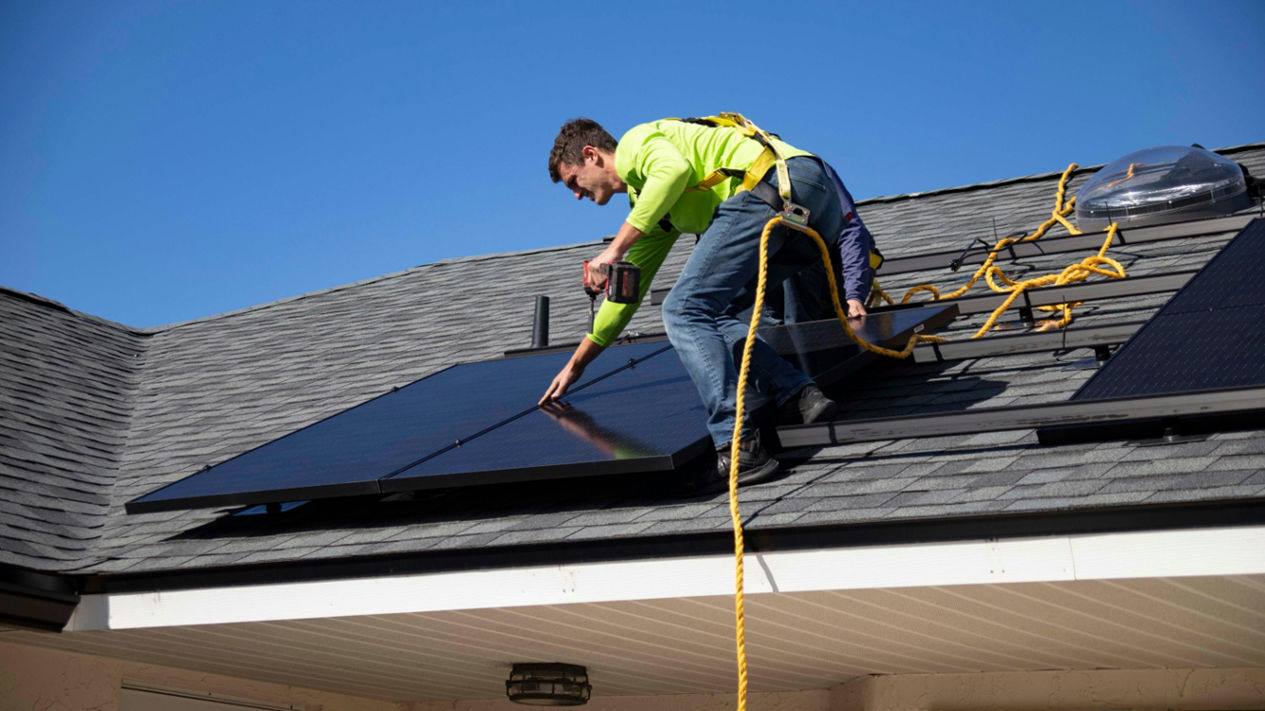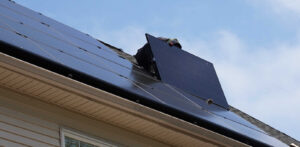In recent years, solar energy has become an increasingly popular solution for homeowners looking to reduce their energy costs and environmental impact. Among the various types of solar panels available, monocrystalline solar panels stand out for their efficiency, longevity, and sleek design. If you’re exploring renewable energy options like solar panels in Pittsburgh or considering working with a local solar panel installation company, this article will guide you through the advantages of monocrystalline panels and help you make an informed decision.
What are Monocrystalline Solar Panels?
Monocrystalline solar panels are made from pure silicon crystals. During the manufacturing process, a single silicon crystal is grown into a large cylindrical shape, which is then sliced into thin wafers. These wafers are used to create solar cells that are arranged in a grid on the panel. This method results in a uniform, dark appearance, and is one of the reasons why monocrystalline panels are considered more efficient than other types of solar panels.
The cells within monocrystalline panels are highly efficient at converting sunlight into electricity. Their structure allows them to produce more electricity from the same amount of sunlight compared to other solar panel types, making them a top choice for homeowners seeking long-term energy savings.
How Do Monocrystalline Solar Panels Work?
Monocrystalline solar panels generate electricity through the photovoltaic effect, where sunlight excites electrons in the silicon cells, creating an electrical current. This process converts solar energy into direct current (DC) electricity, which is then transformed into alternating current (AC) electricity by an inverter so it can power your home.
Due to the purity of the silicon used in monocrystalline panels, they are capable of reaching efficiency rates of around 20% or higher. This makes them more efficient than their polycrystalline and thin-film counterparts, allowing you to generate more power even with limited roof space. For those living in regions with varied weather conditions, such as Pittsburgh, monocrystalline panels are a great option because they maintain their efficiency even in low-light situations.
Advantages of Monocrystalline Solar Panels
When deciding on a solar solution for your home, understanding the benefits of monocrystalline solar panels can help clarify why they are a popular option for both residential and commercial installations.
Higher Efficiency
Monocrystalline panels offer higher efficiency rates compared to other solar technologies. Their ability to convert more sunlight into electricity means you can generate more power from a smaller surface area, making them ideal for homes with limited roof space. This efficiency translates to better long-term savings on your energy bills.
Space-Efficient
Given their efficiency, monocrystalline panels require less space to achieve the same energy output as other panel types. This is especially beneficial for homeowners who want to leave some roof space available for future installations, such as solar water heaters or skylights. A space-efficient system also enhances the overall aesthetic of your home by reducing the number of panels needed.
Durability and Longevity
Monocrystalline solar panels have a longer lifespan than other solar panel types. Most panels come with warranties of 25 years or more, and they often continue to function efficiently well beyond that timeframe. Their long-lasting performance makes them a reliable and low-maintenance energy solution over the decades.
Aesthetic Appeal
Many homeowners prefer the sleek, uniform black appearance of monocrystalline panels compared to the bluish tint of polycrystalline panels. This design complements modern architecture, making the panels less visually intrusive. If curb appeal is important to you, monocrystalline panels offer both beauty and function.
Better Performance in Low Light
Monocrystalline panels are known for performing well in low-light conditions, such as overcast days. This makes them particularly suitable for regions like Pittsburgh, where cloudy days are common. By opting for monocrystalline solar panels, you ensure that your solar system continues to produce energy even in less-than-ideal weather conditions.
Comparison with Other Types of Solar Panels
Choosing the right solar panel type is essential to maximize energy savings. While monocrystalline panels are highly efficient, it’s important to compare them with other options on the market.
Polycrystalline Solar Panels
Polycrystalline solar panels are made from multiple silicon crystals melted together. This manufacturing process is less expensive than the single-crystal method used for monocrystalline panels, which makes polycrystalline panels more affordable upfront. However, they are less efficient, usually achieving efficiency rates between 15% and 17%. Additionally, their bluish hue and inconsistent appearance may be less appealing to some homeowners.
Thin-Film Solar Panels
Thin-film solar panels are the least expensive of the three types but also the least efficient, with efficiency rates ranging from 10% to 12%. Made from various materials like cadmium telluride or amorphous silicon, these panels are flexible and lightweight, which can be beneficial for certain installations. However, they require significantly more space to produce the same amount of electricity as monocrystalline or polycrystalline panels.
In summary, while polycrystalline and thin-film panels may offer lower upfront costs, monocrystalline solar panels provide superior efficiency, better use of space, and long-term performance—especially in environments where sunlight might be limited.
Finding the Right Solar Panel Installation Company
Choosing the right installation company is crucial to ensuring your solar panels are installed correctly and perform optimally. Here are some tips for finding reputable solar companies:
Check Reviews and Testimonials
Look for companies that have strong customer reviews and positive testimonials. Reviews on platforms like Google, Yelp, and solar-specific review sites will give you insight into the experiences of past customers. Consistent high ratings are a good indicator of reliable service and customer satisfaction.
Compare Quotes
It’s important to get quotes from at least three different solar companies. This allows you to compare prices, warranties, and the quality of service they offer. Don’t always opt for the cheapest quote; instead, look for a balance of cost, service, and reputation to ensure you’re getting the best deal.
Look for Certifications
Choose companies that hold certifications from reputable organizations like the North American Board of Certified Energy Practitioners (NABCEP). Certification ensures that the company follows industry standards for safe and efficient installation practices. It also demonstrates the company’s commitment to ongoing training and maintaining a high level of expertise.
Ask About Warranties
Inquire about the warranties offered on both the solar panels and the installation work itself. A good solar company should provide a comprehensive warranty that covers both equipment and labor for at least 20-25 years. This ensures peace of mind in case of any performance issues or equipment failures down the line.
Power Your Pittsburgh Home Efficiently with Monocrystalline Solar Panels
As a trusted option in solar energy, monocrystalline solar panels provide the efficiency, longevity, and aesthetic appeal homeowners need to achieve energy independence. Whether you’re navigating Pittsburgh’s cloudy weather or looking to reduce energy costs year-round, these high-efficiency panels from SunWise USA offer reliable energy production and long-term savings on your bills.
With SunWise USA, your panels will be expertly installed and optimized for peak performance. Our experienced team guides you through every step—from your initial site assessment to system activation—making your transition to renewable energy smooth and stress-free. Contact SunWise today to discover how monocrystalline panels can transform your home’s energy use. Take the first step toward a sustainable future and enjoy the benefits of clean, cost-effective energy for years to come.










